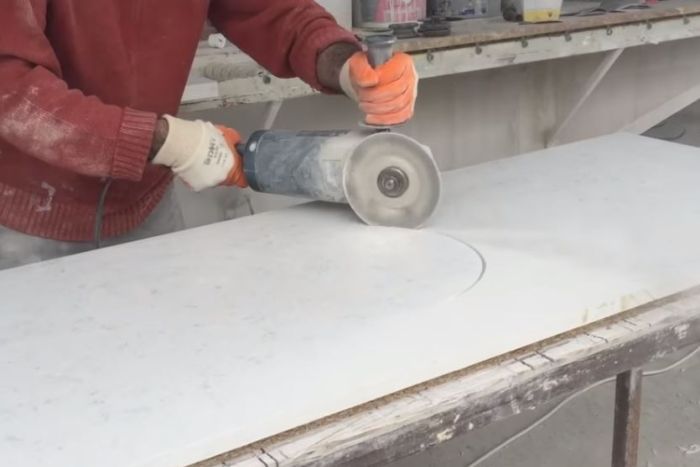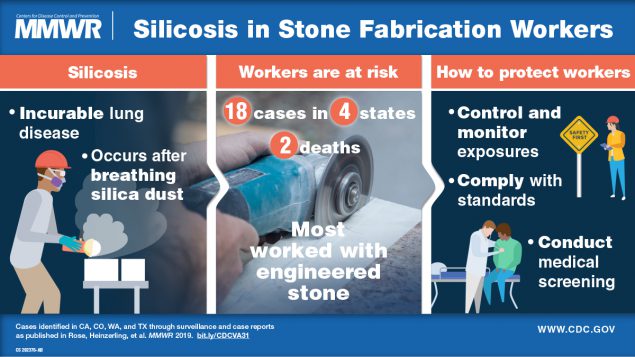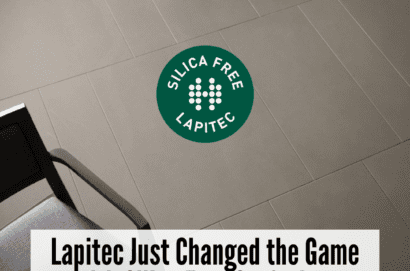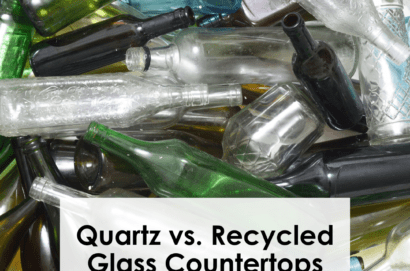The Dark Crystal: Silicosis & Quartz Countertops
Before you start spiraling around your office in a frantic headspin because you don’t like the topic, let’s be clear on a few things:
- Quartz countertops do not cause any disease when they are installed in your home.
- When proper procedures and equipment are used, the exposure to dangerous airborne hazards can be mitigated or eliminated.
- Thirdly, if you are reading this, you are likely a quartz supplier or user, and you want to know just how widespread this silicosis epidemic is going to get – the diagnosis is not good. Not for engineered stone and not for the fabricators that spent years, or decades cutting it.
After dealing with the tariff smackdown from Cambria, first on China and more recently on India and Turkey, quartz suppliers already have a tough hill to climb. Add the recent attention to its correlation to silicosis, and we can see why your Fruit of the Looms are climbing.
Let’s back up and take a couple of deep breaths, and be thankful we can.
Silicosis Who?
Quartz is roughly 90-93% crystalline silica content. When quartz is quarried, cut, or polished for countertops, the crystalline silica creates airborne dust which becomes respirable, hence, respirable silica. Those tiny airborne particles can enter your lungs, creating scar tissue and can cause a number of diseases, including COPD, silicosis and lung cancer. The weakened lung tissue is susceptible to other diseases like tuberculosis. And we thought Juul was in trouble.
Quartz countertops are one of, if not the, most popular countertops on the market right now. We wanted more colors and we wanted more designs, so we started grinding quartz down from a chunky filler to finer and finer dust so we could get more granular and complex patterning. In turn, our design desires drove quartz to a finer and finer powder driving it deeper and deeper into the lungs of those working with it. Not good.
Danger Down Under (and beyond)
No one is breathing easy in Queensland, Australia, which was the most recent country to draw attention to the crisis: 99 stoneworkers were diagnosed with silicosis, 15 were terminal with the youngest being 22 years old. There is no reversal and no cure. The damage is permanent. They are considering banning the use of engineered stone there altogether.
Source: https://www.abc.net.au/news/2019-05-30/stonemason-silicosis-class-action-slater-and-gordon/11162554
Europe saw this coming. They have been attuned to silicosis lawsuits for decades, with the largest stone and quartz manufacturers slowly rolling out lower silica products hoping they will have an alternative before the tsunami hits.
The US is probably the most litigious society in the world. And we just got our hands on this one, so there is potential for a rocky ride here. If people are not properly educated and if this gets launched as an alarmist proclamation that quartz countertops cause cancer we are right back in the days of granite and radon. In fact, according to the CDC, a recent report identified 18 cases of silicosis disease among workers in four states since July 2017, among which two of the affected workers died.
“I am concerned that what we may be seeing here may just be the tip of the iceberg,” says Dr. Amy Heinzerling, an epidemic intelligence service officer with the Centers for Disease Control and Prevention who is assigned to the California Department of Public Health, in a recent interview with NPR (now you know things are getting serious when NPR is on the beat).
OSHA? More like OH-SH**
We know that OSHA means OH-SH** to a lot of people.
But OSHA recently put regulations in place around the wet cutting of quartz or engineered stone that are meant to protect the workers. Some manufacturers and fabricators always had best practices in place, but many did not. The effects can show up decades later. Cue the ambulance chasers.
Whatever your relationship with quartz countertops, this is not the time to turn a blind eye and say it won’t impact you. It is the time to get educated, make sure you know what your exposure may be and protect the people on whom you relied to build your business. This is a retroactive problem. And it is very real.
This CDC graphic just came out drawing attention to the topic:
Source: https://www.cdc.gov/mmwr/volumes/68/wr/mm6838a1.htm
What Silicosis Means for You
If you have quartz in your home, you are safe, there is nothing dangerous and airborne so you can, in fact, breathe easy. Those that made sure your countertop made its way to you may not be able to say the same.
So expect to hear more about this now that our American throngs of cash-hungry lawyers have got their hands on it.
The communication here is so important. If you are still mad at this point and think we are bashing quartz, you are wrong. This is a cautionary tale that this topic is:
- Real
- Not going away
- At risk of being misunderstood
If the message becomes “quartz countertops are bad for you” – then the industry is about to get a solid kick to the engineered stones. You thought tariffs were a b*tch, silicosis is your ex Mother in Law.
The industry needs to acknowledge, educate and ultimately do better.
Consumers need to know what is in their stuff and demand better.
We believe the coming decade will push safer, healthier materials, not just when they are safely installed as part of a design, but along the journey that gets them here.
Exhale.
























